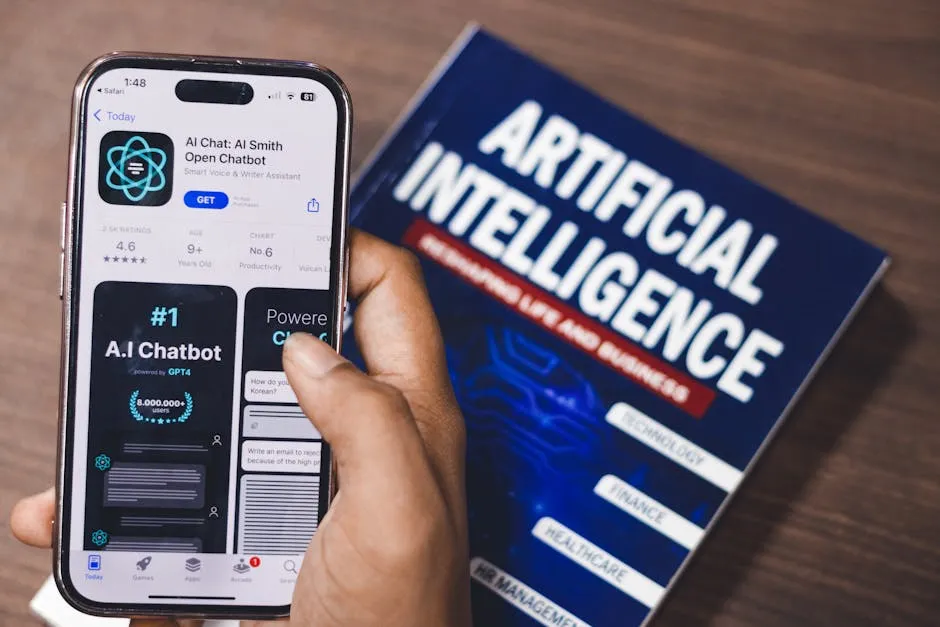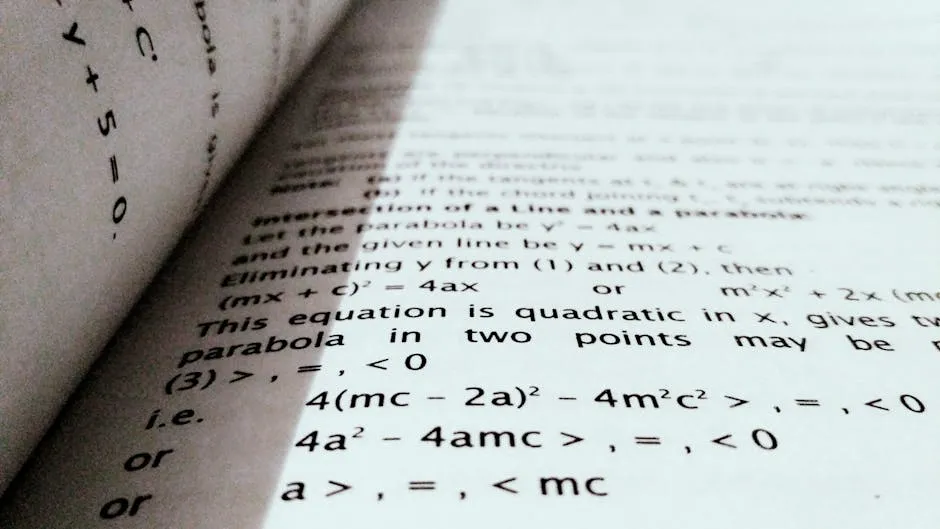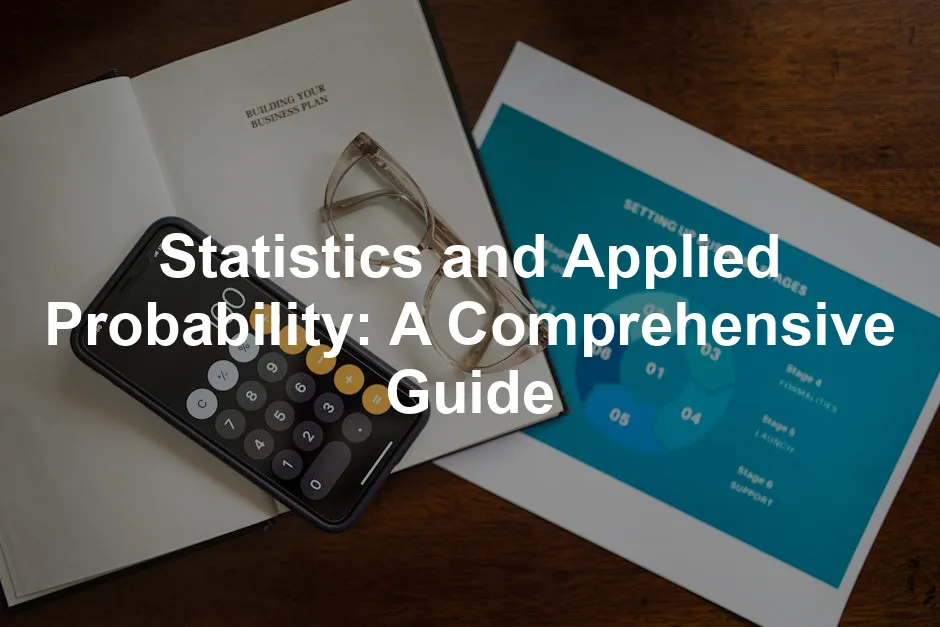

All images from Pexels



All images from Pexels




All images from Pexels





All images from Pexels






All images from Pexels







All images from Pexels








All images from Pexels









All images from Pexels










All images from Pexels











All images from Pexels












All images from Pexels













All images from Pexels














All images from Pexels

Thank you for reading till here 🙂














All images from Pexels
Introduction
Statistics and applied probability are two sides of the same mathematical coin. Statistics involves collecting, analyzing, interpreting, and presenting data. Applied probability, on the other hand, uses probability theory to solve real-world problems across various fields.
Why should we care? Because these disciplines are everywhere! From predicting the weather to managing risks in finance, their applications are vast and vital. In healthcare, for example, they help in analyzing clinical trial results. In engineering, they ensure quality control processes run smoothly. Social sciences utilize these methods to interpret survey data and understand human behavior.
This article aims to provide a thorough understanding of statistics and applied probability. We’ll break down key concepts, delve into methodologies, and highlight practical applications. By the end, you’ll be equipped with the knowledge to appreciate and apply these crucial tools in your own field. So, grab your calculator, and let’s crunch some numbers!
To start your journey in understanding these concepts, you might find it helpful to read an introduction to statistical learning with python book length.
Understanding the Basics of Statistics and Probability
Definition of Statistics and Applied Probability
Statistics refers to the science of data. It encompasses everything from how data is collected to how it’s analyzed and interpreted. On the flip side, applied probability focuses on using probability theory to address practical challenges.
To differentiate them, think of it this way: statistics tells us what the data reveals, while probability helps us understand the likelihood of future events based on that data. They work hand-in-hand, making the world of data analysis a more comprehensive field.
If you really want to dive deeper into understanding these statistics concepts, check out Statistics for Dummies. It’s like having a statistical buddy who explains everything without the jargon!
Key Terms and Concepts
In statistics and applied probability, several key terms are essential for understanding the landscape.
Random Variables: A random variable is a variable whose value is subject to chance. This concept is foundational for analysis.
Probability Distributions: These distributions outline how probabilities are assigned to different values of a random variable. Common examples include normal and binomial distributions.
Statistical Inference: This refers to the process of drawing conclusions about a population based on a sample. It involves estimation and hypothesis testing.
These concepts are not merely academic; they have practical implications. For instance, in healthcare, statistical inference is crucial for determining the effectiveness of a new drug based on trial data. Similarly, understanding random variables and their distributions is vital for risk assessment in finance. You can learn more about this in our detailed guide on statistical inference for estimation in data science colorado.
Understanding these principles is crucial for anyone looking to apply statistical methods effectively. Check out our statistics hypothesis testing cheat sheet for more insights!
Historical Context
Statistics and applied probability have fascinating histories that intertwine with the development of modern science. The roots of statistics can be traced back to the 18th century. Early statisticians focused on data collection to inform governance and population studies. The term “statistics” itself comes to the Latin word “status,” meaning “state.” This reflects its origins in statecraft and governance.
In the 20th century, statistics evolved dramatically. The introduction of probability theory gave rise to new methodologies. Prominent figures emerged during this transformative period. Karl Pearson, known for the Pearson correlation coefficient, laid foundational concepts in statistics. Ronald A. Fisher revolutionized experimental design, emphasizing the importance of randomization. His work established many statistical tests still in use today.
The development of applied probability also gained momentum during this era. In the 1950s, Maurice Bartlett helped popularize the term “applied probability.” He emphasized its significance in addressing practical challenges across various fields. The establishment of the Journal of Applied Probability in 1964 marked a milestone, providing a platform for researchers to share their findings.
As computing power increased, the demand for statistical methods soared. In recent years, the intersection of statistics and data science has transformed industries. Today, statisticians and applied probabilists work in diverse areas, from healthcare to finance, shaping our understanding of uncertainty and decision-making.
With this historical backdrop, we can now appreciate the theoretical foundations that support these vital fields.
Theoretical Foundations
Probability Theory
Basic Principles
Probability theory is the backbone of statistics. It provides a framework for understanding uncertainty. At its core are the laws of probability, which govern how we quantify uncertainty. The first law states that the probability of any event ranges from 0 to 1. An event with a probability of 0 will not happen, while an event with a probability of 1 is certain to occur.
Conditional probability builds on this foundation. It refers to the probability of an event occurring given that another event has already occurred. This concept is crucial for understanding how different events influence one another.
Bayes’ theorem is a standout principle in probability. It allows us to update our beliefs based on new evidence. For example, if we know the probability of disease in a population and receive a positive test result, Bayes’ theorem helps us calculate the actual likelihood of having the disease. This theorem is the secret sauce behind many modern applications, including machine learning and risk assessment.
Discrete and Continuous Distributions
Understanding probability distributions is fundamental to statistics. Distributions describe how probabilities are assigned to different outcomes. They can be classified as discrete or continuous.
Discrete distributions deal with countable outcomes. The Binomial distribution is a classic example. It models the number of successes in a fixed number of trials with a constant probability of success. Think of flipping a coin a set number of times and counting how many heads you get.
Then we have the Normal distribution, a continuous distribution that appears frequently in nature. Its bell-shaped curve represents the distribution of many real-world variables, such as heights or test scores. The beauty of the Normal distribution lies in its properties, like the empirical rule, which states that about 68% of data falls within one standard deviation from the mean.
The Poisson distribution is another important discrete distribution. It models the number of events happening in a fixed interval of time or space. Imagine counting the number of cars passing a checkpoint in an hour. The Poisson distribution helps assess probabilities in such scenarios.
In summary, these principles and distributions form the bedrock of probability theory. They illuminate the path to understanding and interpreting data, enabling us to make informed decisions in an uncertain world.
Statistical Theory
Estimation and Hypothesis Testing
Estimation and hypothesis testing are critical components of statistical theory. Point estimation provides a single value as an estimate of a population parameter. Imagine trying to guess how many jellybeans are in a jar. You take a sample and announce, “I think there are about 200!” That’s your point estimate. But wait! Is that number accurate?
To address this uncertainty, we use confidence intervals. A confidence interval offers a range of values within which we expect the true parameter to lie. For instance, you might say, “I’m 95% confident that there are between 180 and 220 jellybeans.” This interval gives more information than a single estimate.
Hypothesis testing takes us further into the realm of statistics. It involves making an assumption (the null hypothesis) and then testing it using sample data. If the evidence is strong enough, we reject the null hypothesis. Picture it like this: you’ve claimed that the average height of students in your school is 5’8″. A few friends come along and say, “Let’s test that!” They gather data, and if they find the average height is actually 5’6″, you might need to eat your words. Hypothesis testing helps us make decisions based on data, keeping us grounded in evidence rather than assumptions.
For those who want to explore these concepts further, I recommend picking up Naked Statistics: Stripping the Dread from the Data. It’s packed with insights and humor, making statistics feel less like a chore and more like a fun puzzle!
Regression Analysis
Regression analysis is the superhero of statistical modeling. It helps us understand relationships between variables. Ever wondered how changes in study hours affect exam scores? Simple regression can answer that question. It analyzes the relationship between a single independent variable (study hours) and a dependent variable (exam scores).
But what if you want to consider multiple factors? Enter multiple regression! This technique examines how various independent variables influence a dependent variable. For example, you might analyze how study hours, attendance, and sleep impact exam scores all at once. The beauty of regression analysis lies in its ability to provide insights into complex relationships, helping us make informed predictions.
Applications in Various Fields
Engineering and Physical Sciences
Statistics and applied probability play a pivotal role in engineering and physical sciences. These disciplines help engineers make data-driven decisions while ensuring quality control in their designs.
In engineering design, statistics informs the development process. Engineers use statistical methods to analyze how different variables affect performance. Consider a car manufacturer testing engines. They might collect data on fuel efficiency across various conditions. Statistical analysis reveals patterns, helping engineers optimize engine designs for better performance.
Quality control is another area where statistics shines. Think of it as the quality watchdog of manufacturing. Statistical Process Control (SPC) uses techniques like control charts to monitor production processes. If something goes awry, such as a spike in defects, SPC signals engineers to investigate. This proactive approach reduces waste and ensures consistent quality.
Moreover, applied probability aids in risk management. Engineers often face uncertainties in their projects. Using probability models, they can assess the likelihood of failures and their potential consequences. For example, a civil engineer might evaluate the risk of structural failure under various load scenarios. By quantifying risks, they can design safer structures and allocate resources efficiently.
In the field of environmental science, statistics helps assess the impact of human activities on ecosystems. Researchers analyze data on pollution levels, species populations, and climate changes to draw insights and inform policy decisions. Statistical models can predict how different variables interact, providing a clearer picture of environmental dynamics.
In summary, the integration of statistics and applied probability in engineering and physical sciences is indispensable. These tools help engineers design better products, maintain quality standards, and manage risks. As industries evolve, the demand for data-driven decision-making continues to grow, underscoring the significance of statistical applications.
Healthcare and Medicine
Statistics and applied probability are lifesavers in healthcare. Imagine trying to figure out how effective a new medication is. Without the right stats, it’s like throwing darts in the dark. In epidemiology, statistics help track disease outbreaks. Researchers analyze data to understand how diseases spread. This information is crucial for public health responses.
Clinical trials heavily rely on statistical methods. Researchers use them to determine the safety and efficacy of treatments. They analyze data from diverse populations to ensure results are generalizable. Without proper statistical analysis, new drugs could be harmful. For a deeper dive, check out our analysis on healthcare workplace violence statistics virginia.
Healthcare modeling is another area where these tools shine. Models predict patient outcomes and resource needs. This helps hospitals manage their services efficiently. For instance, knowing how many beds are required during a flu outbreak can save lives. Overall, statistics and applied probability are essential for informed decision-making in healthcare.
If you’re interested in a fantastic read on how statistics revolutionized science, I highly recommend The Lady Tasting Tea: How Statistics Revolutionized Science in the Twentieth Century. It’s an engaging journey through the history of statistics!
Data Science and Machine Learning
In the realm of data science, statistics reign supreme. Think of it as the backbone of data analytics. Statisticians sift through massive datasets, uncovering patterns that lead to insights. This process is fundamental for making informed decisions in business and technology.
Predictive modeling is where the magic happens. By applying statistical techniques, data scientists forecast future trends. For instance, companies use these models to predict customer behavior. This can shape marketing strategies and product development.
Moreover, machine learning algorithms thrive on statistical principles. They use data to learn and make predictions. The better the statistical methods, the more accurate the machine learning models become. In essence, statistics empowers data science, transforming raw data into actionable knowledge.
Social Sciences and Economics
Statistics and applied probability are crucial in social sciences and economics. Surveys are a primary tool for gathering data. Researchers rely on statistical methods to analyze this data, drawing meaningful conclusions about society.
Economic forecasting is another area where these tools are indispensable. Analysts use statistical models to predict economic trends. This includes everything from inflation rates to employment levels. Accurate forecasts help policymakers make informed decisions, impacting millions of lives.
Additionally, statistics inform policy-making. Governments utilize data to assess the impact of new policies. By analyzing the effects of social programs, they can make adjustments to improve outcomes. Overall, statistics and applied probability are vital for understanding social dynamics and economic behavior.
Current Trends and Future Directions
Advances in Methodologies
Statistics and applied probability are evolving faster than a cat on a hot tin roof! The explosion of data in recent years has sparked innovative methodologies, particularly in machine learning and big data analytics. These techniques have revolutionized how we analyze and interpret data.
Machine learning algorithms help identify patterns and make predictions from massive datasets. Think of it as having a super-sleuth that can sift through mountains of data in mere seconds. For instance, businesses use machine learning to forecast sales and optimize marketing strategies. With tools like random forests and neural networks, the accuracy of predictions has skyrocketed, making decision-making a breeze.
Big data analytics complements this by managing and processing vast amounts of information. Techniques like cluster analysis and natural language processing enable researchers to extract valuable insights from unstructured data. This synergy between machine learning and big data paves the way for groundbreaking discoveries in various fields, from healthcare to finance.
The Role of Technology
Technology plays a starring role in the realm of statistics and applied probability. Modern software tools like R and Python have become staples for statisticians and data scientists alike. R, with its extensive libraries, is perfect for statistical modeling, while Python shines in data manipulation and machine learning tasks.
These tools empower users to perform complex analyses with ease. Imagine trying to run a regression analysis with only a pencil and paper. Yikes! But with R or Python, you can tackle intricate models and visualize data with just a few lines of code.
Moreover, cloud computing has transformed the landscape, allowing for scalable data storage and processing. Data scientists can collaborate seamlessly, sharing insights and analyses in real time. This technological synergy not only enhances productivity but also drives innovation across industries.
Challenges and Opportunities
While the future looks bright, challenges remain in the field of statistics and applied probability. One major hurdle is the need for skilled professionals. As industries increasingly rely on data-driven insights, the demand for statisticians continues to outpace supply. Educational institutions must adapt, equipping students with the necessary skills to thrive in this evolving landscape.
Another challenge is ensuring data privacy and security. With the rise of big data, concerns around how personal information is used are on the rise. Striking a balance between utilizing data for insights while protecting individuals’ privacy is crucial.
However, these challenges present opportunities! There’s a growing focus on interdisciplinary research. Collaborations between statisticians, computer scientists, and domain experts are becoming more common. This approach fosters innovative solutions to complex problems, from climate change modeling to public health strategies.
In summary, the field of statistics and applied probability is on the cusp of exciting developments. Embracing new methodologies, leveraging technology, and addressing challenges will pave the way for a future rich in possibilities.
Conclusion
Statistics and applied probability are the unsung heroes of the data-driven world. Their importance spans various fields, including healthcare, finance, and social sciences. These disciplines provide essential tools for understanding uncertainty and making informed decisions.
As we recap, the advances in methodologies, the role of technology, and the challenges ahead highlight the dynamic nature of the field. The future is bright for statisticians and applied probabilists!
I encourage you to delve deeper into this fascinating subject. Whether through formal education or self-study, the applications of statistics and applied probability are boundless. From predicting market trends to improving healthcare outcomes, there’s a wealth of knowledge waiting to be uncovered.
In closing, remember that as the landscape evolves, so too will the methods and tools we use. Staying informed and adaptable will ensure you remain at the forefront of this ever-changing field.
Frequently Asked Questions (FAQ)

Thank you for reading till here 🙂














All images from Pexels




